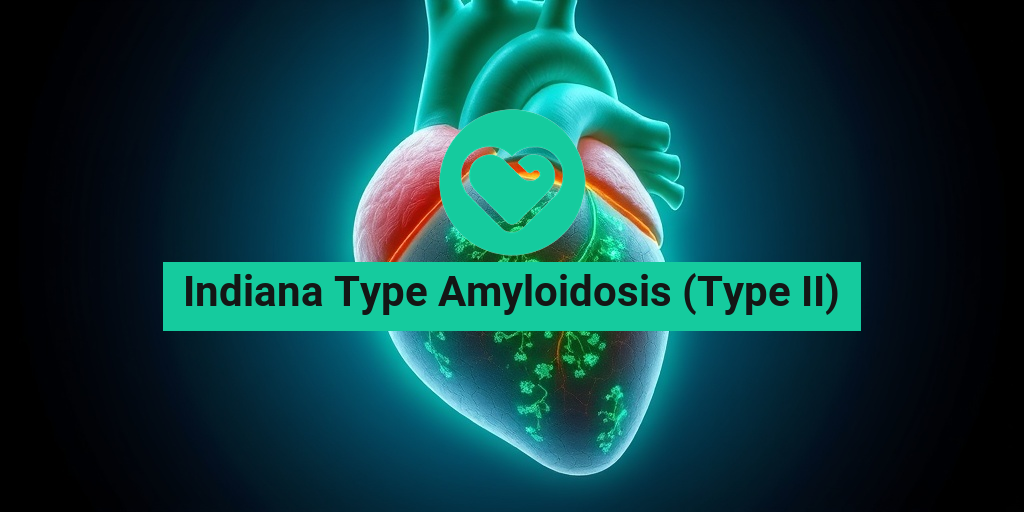“`html
What Is Wilms’ Tumor?
Wilms’ Tumor, also known as nephroblastoma, is a type of kidney cancer that primarily affects children, typically between the ages of 3 and 4. This rare cancer accounts for about 5% of all childhood cancers and is named after Dr. Max Wilms, who first described the tumor in the early 20th century. Understanding Wilms’ Tumor is crucial for early detection and effective treatment.
Causes and Risk Factors
The exact cause of Wilms’ Tumor remains unclear, but several factors may increase the risk of developing this condition:
- Genetic predisposition: Certain genetic syndromes, such as WAGR syndrome, Denys-Drash syndrome, and Beckwith-Wiedemann syndrome, are associated with a higher risk of Wilms’ Tumor.
- Family history: A family history of Wilms’ Tumor or other kidney cancers may increase the likelihood of developing the disease.
- Age and gender: Wilms’ Tumor is more common in children and tends to affect girls more than boys.
Pathology of Wilms’ Tumor
Wilms’ Tumor typically arises from immature kidney cells, leading to the formation of a mass or tumor. The tumor can vary in size and may affect one or both kidneys. Pathologists often classify Wilms’ Tumor into different subtypes based on its cellular characteristics, which can influence treatment options and prognosis.
Wilms’ Tumor Symptoms
Recognizing the symptoms of Wilms’ Tumor is vital for prompt diagnosis and treatment. While symptoms can vary, some of the most common signs include:
- Abdominal swelling: One of the most noticeable symptoms is a palpable mass or swelling in the abdomen, which may be detected during a routine examination.
- Pain in the abdomen: Children may experience discomfort or pain in the abdominal area, which can sometimes be mistaken for other conditions.
- Blood in urine: Hematuria, or blood in the urine, can occur and may be a concerning sign that warrants further investigation.
- Fever: Unexplained fevers may be present, indicating an underlying health issue.
- Loss of appetite and weight loss: Children with Wilms’ Tumor may show a decreased appetite and experience significant weight loss.
- Fatigue: General fatigue and lethargy can also be symptoms, as the body struggles to cope with the disease.
When to Seek Medical Attention
If a child exhibits any of the above symptoms, especially abdominal swelling or blood in the urine, it is crucial to seek medical attention promptly. Early diagnosis can significantly improve the prognosis and treatment outcomes for Wilms’ Tumor.
Conclusion
Wilms’ Tumor is a serious condition that requires immediate attention. Understanding its symptoms and risk factors can help parents and caregivers act quickly. For more information on Wilms’ Tumor and related health topics, consider visiting Yesil Health AI, a valuable resource for evidence-based health answers. Remember, early detection is key to successful treatment! 🌟
“`

“`html
Wilms’ Tumor Causes
Wilms’ tumor, also known as nephroblastoma, is a type of kidney cancer that primarily affects children. Understanding the causes of Wilms’ tumor is crucial for early detection and treatment. While the exact cause remains largely unknown, several factors have been identified that may contribute to the development of this condition.
Genetic Factors
Genetics play a significant role in the occurrence of Wilms’ tumor. Certain genetic syndromes are associated with a higher risk of developing this cancer:
- WAGR Syndrome: This genetic condition includes Wilms’ tumor, aniridia (absence of the iris), genitourinary abnormalities, and range of developmental delays.
- Denys-Drash Syndrome: This syndrome is characterized by kidney disease and genital abnormalities, and it significantly increases the risk of Wilms’ tumor.
- Beckwith-Wiedemann Syndrome: Children with this overgrowth disorder are at an increased risk for Wilms’ tumor, often presenting with other abnormalities such as macroglossia (enlarged tongue) and organomegaly (enlarged organs).
Chromosomal Abnormalities
Research has indicated that chromosome 11 plays a critical role in the development of Wilms’ tumor. Abnormalities in this chromosome can lead to the disruption of genes that regulate cell growth and division, potentially resulting in tumor formation. Studies have shown that alterations in the 11p15 region are particularly significant in the pathogenesis of this cancer.
Environmental Factors
While genetic predispositions are significant, environmental factors may also contribute to the risk of developing Wilms’ tumor. Some studies suggest that exposure to certain chemicals or toxins during pregnancy could increase the likelihood of the child developing this condition. However, more research is needed to establish a definitive link.
Wilms’ Tumor Risk Factors
Identifying the risk factors associated with Wilms’ tumor can help in understanding who may be more susceptible to this disease. Here are some key risk factors to consider:
Age and Gender
Wilms’ tumor primarily affects children, with the majority of cases diagnosed in children aged 3 to 4 years. Additionally, it is more common in girls than in boys, although the reasons for this gender disparity are not fully understood.
Family History
A family history of Wilms’ tumor or related genetic syndromes can significantly increase a child’s risk. If a parent or sibling has been diagnosed with Wilms’ tumor, the likelihood of developing the disease is higher. Genetic counseling may be beneficial for families with a history of this condition.
Ethnicity
Research indicates that certain ethnic groups may have a higher incidence of Wilms’ tumor. For instance, children of African descent are reported to have a higher risk compared to Caucasian children. Understanding these disparities can aid in targeted screening and awareness efforts.
Congenital Abnormalities
Children born with certain congenital abnormalities, particularly those affecting the kidneys or urinary tract, may have an increased risk of developing Wilms’ tumor. Conditions such as horseshoe kidney or renal agenesis (absence of one kidney) are notable examples.
Previous Cancer History
Children who have previously been diagnosed with other types of cancer may also be at a higher risk for developing Wilms’ tumor. This is particularly true for those who have undergone treatment for other malignancies, as certain therapies can increase the risk of secondary cancers.
In conclusion, while the exact causes of Wilms’ tumor remain unclear, understanding the various risk factors can help in early detection and intervention. If you have concerns about Wilms’ tumor or its risk factors, consulting with a healthcare professional is essential for personalized advice and guidance. 🌟
“`

“`html
Wilms’ Tumor Diagnosis
Diagnosing Wilms’ Tumor, a type of kidney cancer primarily affecting children, involves a combination of clinical evaluation, imaging studies, and laboratory tests. Early detection is crucial for effective treatment and improved prognosis. Here’s a closer look at the diagnostic process.
Initial Symptoms and Clinical Evaluation
Parents and caregivers often notice symptoms that prompt a visit to the pediatrician. Common signs of Wilms’ Tumor include:
- Abdominal Swelling: A noticeable mass or swelling in the abdomen is often the first sign.
- Pain: Some children may experience abdominal pain or discomfort.
- Fever: Unexplained fevers can also be a symptom.
- Blood in Urine: Hematuria, or blood in the urine, may occur.
- High Blood Pressure: Elevated blood pressure can be associated with kidney tumors.
Upon noticing these symptoms, a thorough physical examination is conducted, focusing on the abdomen to check for any masses or abnormalities.
Imaging Studies
Once a mass is suspected, imaging studies are essential for confirming the diagnosis. The most common imaging techniques include:
- Ultrasound: This is often the first imaging test performed. It helps visualize the kidney and surrounding structures.
- CT Scan: A computed tomography scan provides detailed images of the abdomen and can help determine the size and extent of the tumor.
- MRI: Magnetic resonance imaging may be used for further evaluation, especially if there are concerns about the tumor’s involvement with surrounding tissues.
Laboratory Tests
In addition to imaging, laboratory tests play a vital role in the diagnosis of Wilms’ Tumor. These may include:
- Urinalysis: This test checks for blood or abnormal substances in the urine.
- Blood Tests: Blood tests can assess kidney function and detect any abnormalities in blood cell counts.
Biopsy Considerations
In some cases, a biopsy may be necessary to confirm the diagnosis. However, due to the nature of Wilms’ Tumor, a biopsy is not always performed before surgery. Instead, the tumor is often removed surgically, and a pathologist examines it to confirm the diagnosis.
Wilms’ Tumor Staging
Staging is a critical component in the management of Wilms’ Tumor, as it helps determine the extent of the disease and guides treatment decisions. The staging system for Wilms’ Tumor is primarily based on the tumor’s size, location, and whether it has spread to other parts of the body.
Stage I: Localized Tumor
In Stage I, the tumor is confined to the kidney and can be completely removed through surgery. There is no evidence of cancer in nearby lymph nodes or other organs. This stage generally has a favorable prognosis.
Stage II: Tumor Extends Beyond the Kidney
Stage II indicates that the tumor has extended beyond the kidney but can still be completely removed. There may be cancer cells in nearby lymph nodes, but no distant spread is detected.
Stage III: Regional Spread
At this stage, the tumor has spread to nearby lymph nodes or other structures within the abdomen. It may not be completely resectable, and additional treatments such as chemotherapy are often required.
Stage IV: Distant Metastasis
Stage IV signifies that the cancer has spread to distant organs, such as the lungs or liver. This stage requires a more aggressive treatment approach, including chemotherapy and possibly radiation therapy.
Stage V: Bilateral Wilms’ Tumor
In rare cases, Wilms’ Tumor can occur in both kidneys simultaneously. This is classified as Stage V and requires careful management to preserve kidney function while treating the cancer.
Understanding the staging of Wilms’ Tumor is essential for parents and caregivers as it directly influences treatment options and prognosis. Early diagnosis and appropriate staging can significantly improve outcomes for children affected by this condition. 🌟
“`

“`html
Wilms’ Tumor Treatment Options
Wilms’ tumor, a type of kidney cancer that primarily affects children, requires a comprehensive treatment approach tailored to the individual patient. The treatment plan typically involves a combination of surgery, chemotherapy, and sometimes radiation therapy. Understanding these options can empower families to make informed decisions during a challenging time.
Surgery: The Cornerstone of Treatment
The primary treatment for Wilms’ tumor is surgical intervention. The goal of surgery is to remove the tumor and, in many cases, the affected kidney. This procedure is known as a nephrectomy. Here are some key points regarding surgical treatment:
- Types of Surgery: Depending on the tumor’s size and location, surgeons may perform a partial nephrectomy (removing only the tumor) or a radical nephrectomy (removing the entire kidney).
- Timing: Surgery is usually performed after initial imaging studies confirm the diagnosis and assess the tumor’s extent.
- Recovery: Post-surgery, children typically require a hospital stay for monitoring and recovery, which can vary based on the individual case.
Chemotherapy: Targeting Cancer Cells
Chemotherapy is often used in conjunction with surgery to eliminate any remaining cancer cells and reduce the risk of recurrence. Here’s what you need to know:
- Preoperative Chemotherapy: In some cases, chemotherapy may be administered before surgery to shrink the tumor, making it easier to remove.
- Postoperative Chemotherapy: After surgery, chemotherapy is commonly prescribed to target any residual cancer cells, especially in cases where the tumor is larger or has spread.
- Common Drugs: Medications such as dactinomycin and vincristine are frequently used in treatment regimens.
Radiation Therapy: When Necessary
Radiation therapy may be recommended in specific situations, particularly if the tumor has spread beyond the kidney or if there are concerns about local recurrence. Here are some considerations:
- Targeted Treatment: Radiation is used to target specific areas where cancer cells may remain after surgery.
- Timing: It is usually administered after chemotherapy and surgery, depending on the individual case.
- Side Effects: While effective, radiation can have side effects, including fatigue and skin irritation, which should be discussed with the healthcare team.
Clinical Trials and Emerging Treatments
For some patients, participating in clinical trials may provide access to cutting-edge therapies that are not yet widely available. These trials often explore new chemotherapy agents, targeted therapies, or immunotherapies. Discussing clinical trial options with a healthcare provider can be beneficial for families seeking the latest advancements in Wilms’ tumor treatment.
Wilms’ Tumor Prognosis
The prognosis for Wilms’ tumor varies based on several factors, including the tumor’s stage at diagnosis, the child’s age, and the overall health of the patient. Understanding these factors can help families navigate the journey ahead.
Factors Influencing Prognosis
- Stage of the Tumor: The stage at which Wilms’ tumor is diagnosed plays a crucial role in determining the prognosis. Early-stage tumors generally have a better outlook compared to those diagnosed at a later stage.
- Histology: The tumor’s histological type (the microscopic structure of the tumor) can also impact prognosis. Favorable histology is associated with a better outcome.
- Age: Younger children tend to have a more favorable prognosis than older children, although individual circumstances can vary.
Survival Rates
According to recent studies, the overall survival rate for Wilms’ tumor is quite promising, with rates exceeding 90% for localized tumors. However, survival rates can differ significantly based on the factors mentioned above:
- Localized Wilms’ Tumor: Approximately 90-95% survival rate.
- Regional Spread: Survival rates drop to around 70-80%.
- Metastatic Disease: The prognosis is less favorable, with survival rates around 40-60%.
Long-Term Follow-Up
After treatment, long-term follow-up is essential for monitoring potential late effects of treatment and ensuring any recurrence is detected early. Regular check-ups, imaging studies, and assessments of kidney function are crucial components of post-treatment care.
In conclusion, while a diagnosis of Wilms’ tumor can be daunting, advancements in treatment options and a generally favorable prognosis provide hope for many families. Staying informed and engaged with healthcare providers is key to navigating this journey successfully. 🌟
“`

“`html
Frequently Asked Questions about Wilms’ Tumor
What is Wilms’ Tumor?
Wilms’ Tumor is a type of kidney cancer that primarily affects children. It usually occurs in one kidney but can sometimes affect both. This tumor is most commonly diagnosed in children aged 3 to 4 years.
What are the symptoms of Wilms’ Tumor?
Common symptoms include:
- Abdominal swelling or a noticeable mass in the abdomen
- Pain in the abdomen
- Fever without an obvious cause
- Blood in urine (hematuria)
- Loss of appetite and weight loss
What are the treatment options for Wilms’ Tumor?
Treatment typically involves a combination of:
- Surgery to remove the tumor
- Chemotherapy to kill cancer cells
- Radiation therapy in certain cases
Each treatment plan is tailored to the individual based on the tumor’s stage and other factors.
What are the anesthesia considerations for Wilms’ Tumor surgery?
Before surgery, it is crucial to discuss anesthesia options with the healthcare team. Considerations may include:
- Patient’s overall health and any underlying conditions
- Type of surgery being performed
- Potential for blood loss during the procedure
What is the prognosis for children with Wilms’ Tumor?
The prognosis for children diagnosed with Wilms’ Tumor is generally favorable, especially when detected early. The survival rate can be as high as 90% for localized tumors. However, prognosis can vary based on factors such as:
- Stage of the tumor at diagnosis
- Age of the child
- Response to treatment
Are there any related conditions to Wilms’ Tumor?
Yes, certain genetic syndromes and conditions are associated with an increased risk of developing Wilms’ Tumor, including:
- WAGR syndrome
- Denys-Drash syndrome
- Beckwith-Wiedemann syndrome
How is Wilms’ Tumor diagnosed?
Diagnosis typically involves:
- Physical examination to check for abdominal masses
- Imaging tests such as ultrasound, CT scans, or MRI
- Biopsy to confirm the presence of cancer cells
What role does radiology play in Wilms’ Tumor?
Radiology is essential for:
- Diagnosing the tumor
- Staging the cancer
- Monitoring treatment response
Where can I find more information about Wilms’ Tumor?
For more detailed information, consider visiting reputable health websites, consulting with healthcare professionals, or joining support groups for families affected by Wilms’ Tumor.
“`




